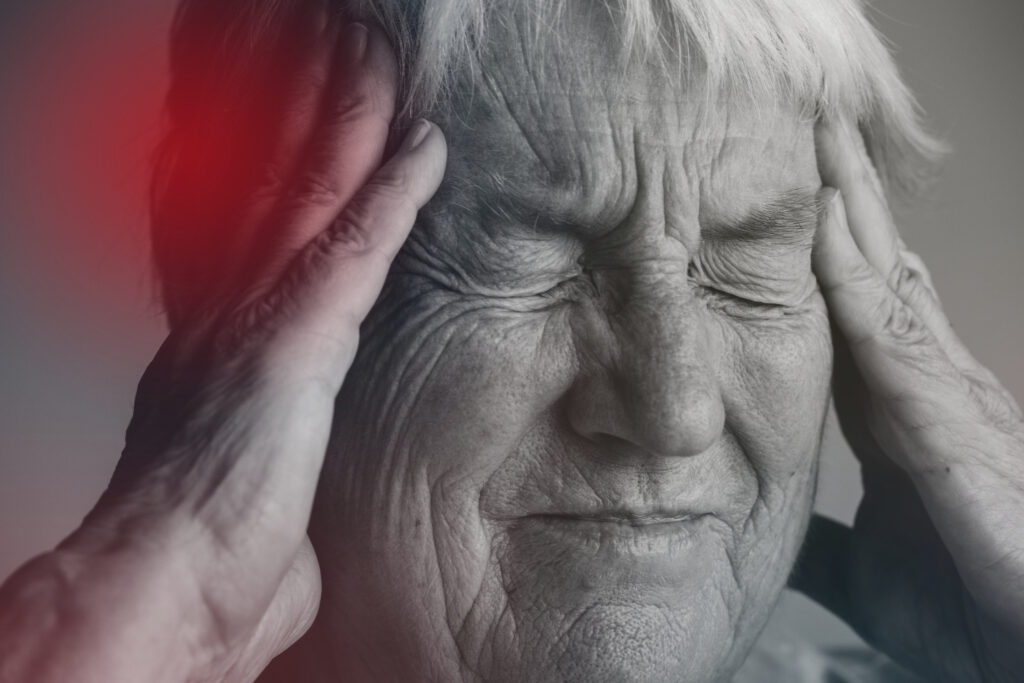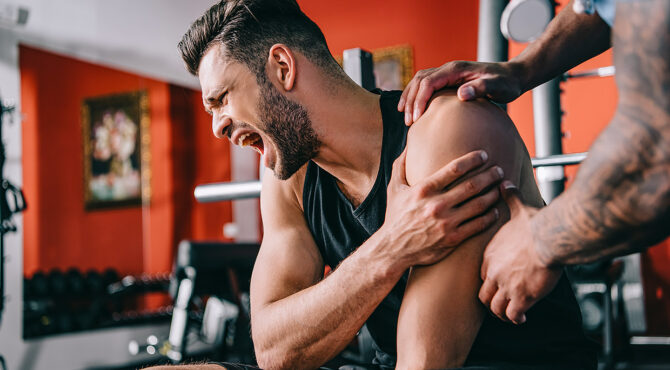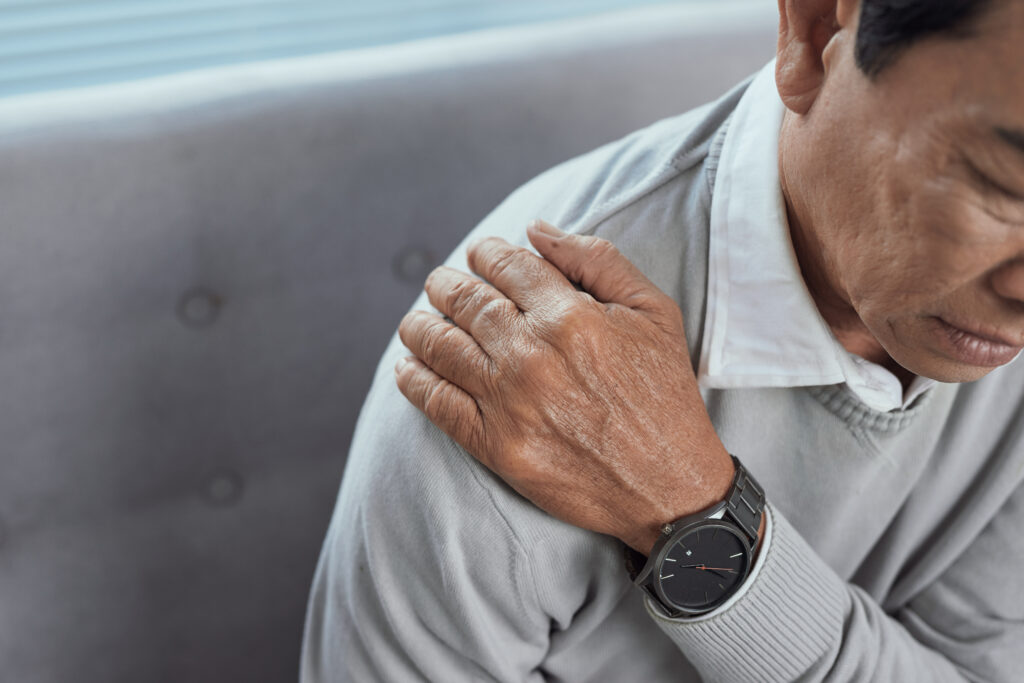You might be surprised to learn that 75% of athletes find significant relief from alternative pain management methods like acupuncture and mindfulness practices. These holistic approaches not only speed up recovery but also enhance performance without the drawbacks of traditional medications. As more athletes turn to these natural solutions, it raises questions about the effectiveness and sustainability of conventional treatments. What are the specific benefits these athletes experience, and how do these practices compare with traditional methods? The answers could shift your perspective on pain management in sports.
Overview of Alternative Pain Relief
When it comes to managing pain, athletes often seek alternatives to conventional methods, looking for options that fit their lifestyle and enhance performance. You might find yourself exploring various alternative pain relief strategies to optimize your recovery and maintain peak physical condition. These approaches often emphasize holistic and natural solutions, aiming to minimize side effects associated with traditional medications.
Many athletes turn to practices like acupuncture, which targets specific pressure points to relieve discomfort and promote healing. You might also consider massage therapy, an effective way to alleviate muscle tension and improve circulation, allowing for quicker recovery times.
Additionally, therapeutic modalities like cryotherapy and heat therapy offer immediate relief by reducing inflammation and increasing blood flow, respectively.
Nutrition plays a vital role, too. You may want to explore anti-inflammatory diets rich in omega-3 fatty acids, antioxidants, and whole foods to help manage pain from within. Supplements such as turmeric or ginger could be beneficial as well, providing an extra layer of support for your body's healing processes.
Mind-body techniques, including yoga and meditation, can also help you cope with pain by promoting relaxation and mental clarity. By incorporating these alternative methods into your routine, you'll not only tackle pain more effectively but may also enhance your overall athletic performance.
Ultimately, understanding and experimenting with these alternative pain relief options can empower you to find what works best for your unique needs and goals.
Popular Alternative Therapies
Athletes frequently turn to popular alternative therapies to effectively manage pain and enhance their performance. Among these therapies, acupuncture stands out as a favored option. It involves inserting fine needles into specific points on the body, which can help relieve muscle tension and improve circulation. Many athletes report significant pain reduction and increased flexibility after sessions, making it a valuable tool in their recovery arsenal.
Another popular therapy is massage, which not only aids in pain relief but also promotes relaxation. Whether it's deep tissue or sports massage, the benefits are clear. Regular sessions can help you recover faster from workouts and reduce the risk of injuries. Plus, it's a great way to alleviate stress and improve your overall well-being.
Chiropractic care has gained traction among athletes as well. By aligning the spine and optimizing the nervous system, chiropractors can enhance mobility and reduce pain. Many athletes swear by regular adjustments, claiming they help keep them at peak performance levels.
Herbal remedies and supplements are also on the rise. Ingredients like turmeric and ginger are known for their anti-inflammatory properties and can be easily added to your diet or taken as supplements. Many athletes find that these natural options provide a holistic approach to pain management.
Finally, practices like yoga and Pilates are becoming increasingly popular. They not only help with flexibility and core strength but also foster mindfulness, which can aid in managing pain and enhancing focus during competition.
Benefits of Holistic Approaches
When you explore holistic approaches, you'll likely notice enhanced recovery times that can keep you performing at your best.
These methods also help reduce your dependency on medications, allowing for a more natural healing process.
Embracing holistic options can lead to a healthier, more balanced approach to pain management.
Enhanced Recovery Times
Enhancing recovery times through holistic approaches offers athletes a natural and effective way to bounce back from intense training and competition.
By incorporating practices like yoga, acupuncture, and massage therapy, you can markedly reduce muscle tension and promote blood flow, which speeds up the healing process.
Mindfulness and meditation techniques also play an essential role in your recovery. They help manage stress and anxiety, allowing your body to focus on healing. When you're mentally at ease, your body can repair itself more efficiently.
Nutrition is another key aspect. Consuming anti-inflammatory foods and staying hydrated supports your recovery. Foods rich in omega-3 fatty acids, antioxidants, and protein can help rebuild muscle tissue and reduce inflammation.
Moreover, these holistic methods often lead to better sleep quality. Adequate rest is crucial for recovery, as it allows your body to repair itself and replenish energy stores.
By prioritizing holistic approaches, you not only enhance your recovery times but also improve your overall well-being, ensuring you're ready to perform at your best in the next competition.
Embracing these methods can truly transform your recovery experience.
Reduced Dependency on Medications
Many athletes find themselves relying heavily on over-the-counter or prescription medications to manage pain and discomfort. However, as you explore alternative pain relief methods, you might discover a path to reduced dependency on these medications.
Holistic approaches, such as acupuncture, massage therapy, and mindfulness practices, can effectively alleviate pain without the side effects associated with pharmaceuticals. By incorporating these methods into your routine, you can address the root causes of your discomfort rather than just masking the symptoms.
For instance, acupuncture can help release endorphins, while massage therapy improves circulation, promoting faster recovery. Additionally, mindfulness techniques can reduce stress, which often exacerbates pain.
As you shift to these holistic approaches, you'll likely notice an increase in your overall well-being. You'll feel more empowered as you take control of your pain management, reducing the need for medication.
This change not only fosters a healthier lifestyle but also enhances your performance as an athlete. Ultimately, embracing alternative pain relief methods can lead to a more sustainable and balanced approach to your physical health, ensuring you stay in peak condition without relying on medications.
Athlete Testimonials and Experiences
Sharing their stories, athletes have highlighted the profound impact of alternative pain relief methods on their performance and recovery. Many of you might relate to the struggles of persistent pain and the quest for effective solutions.
Take, for instance, Mia, a seasoned marathon runner. After battling joint pain for years, she discovered acupuncture. Mia says it transformed her training regimen. "I felt more energized and less restricted," she recalls. The results motivated her to push harder during races, ultimately improving her times.
Then there's Jake, a football player who swears by CBD oil. He faced chronic pain from old injuries and was hesitant to try it at first. After just a few weeks, Jake noticed a significant reduction in discomfort. "It's made a world of difference," he shares. "I can focus on my game without constantly worrying about pain."
Similarly, Sarah, a professional dancer, found relief through yoga and mindfulness techniques. She emphasizes the importance of mental clarity alongside physical relief. "It's not just about the pain; it's about finding balance," she explains.
These testimonials reveal a common thread: alternative pain relief methods not only alleviate physical discomfort but also enhance overall performance. You can see how athletes are embracing these approaches, seeking a holistic path to recovery.
They're no longer just coping; they're thriving, and their experiences may inspire you to explore these alternatives in your own athletic journey.
Comparison With Traditional Methods
When considering pain relief options, it's essential to weigh the effectiveness of alternative methods against traditional ones.
You might also want to think about the risks associated with conventional treatments and how they stack up regarding cost.
Exploring these factors can help you make a more informed choice for your recovery.
Effectiveness of Alternatives
How do alternative pain relief methods stack up against traditional approaches for athletes? You might find that alternatives like acupuncture, massage therapy, and mindfulness meditation not only help reduce pain but also enhance recovery. Many athletes report feeling less discomfort and improved overall well-being when incorporating these methods into their training routines.
For instance, acupuncture has been shown to release endorphins, providing a natural pain relief pathway. Similarly, massage therapy aids in muscle recovery and reduces inflammation, making it a favorite among many athletes.
On the other hand, mindfulness practices can help manage pain perception and stress, which can be just as essential in high-performance sports.
While traditional methods like NSAIDs or corticosteroids can offer quick relief, they often come with unwanted side effects and long-term health concerns. In contrast, alternative approaches often promote holistic healing without the same risks.
As you weigh your options, consider trying a blend of both worlds. Many athletes find that combining traditional and alternative methods can maximize effectiveness, allowing them to perform at their best while minimizing pain.
Risks of Traditional Methods
Many athletes overlook the potential risks associated with traditional pain relief methods.
While over-the-counter painkillers and prescription medications can provide immediate relief, they often come with significant downsides that you should consider. These methods aren't always as safe as you might think.
Here are some risks to keep in mind:
- Addiction: Long-term use of opioids can lead to physical dependence and addiction.
- Side Effects: Common side effects, such as gastrointestinal issues, drowsiness, and dizziness, can hinder your performance.
- Masking Symptoms: Pain relievers might dull your pain, but they can also mask underlying injuries, leading to more severe problems down the line.
- Drug Interactions: Combining pain medications with other treatments or supplements can lead to dangerous interactions, increasing the risk of serious health issues.
Cost Comparison Analysis
There's a growing interest among athletes in alternative pain relief methods, especially when considering the costs associated with traditional pain management. Traditional methods often involve prescription medications, physical therapy sessions, and sometimes invasive procedures, all of which can add up quickly.
For instance, painkillers can be expensive, and ongoing therapy sessions might strain your budget over time.
On the other hand, alternative pain relief options, like acupuncture, massage therapy, or herbal supplements, can be more affordable and sometimes offer longer-lasting relief. Many athletes find that investing in these methods not only saves money but also reduces their reliance on pharmaceuticals with unwanted side effects.
Furthermore, preventative approaches, such as yoga or mindfulness practices, can also decrease the likelihood of injuries, ultimately saving you money on treatments.
While initial costs for some alternative therapies might be comparable, consider the potential long-term savings.
In the end, weighing the upfront investment against the ongoing costs of traditional methods could reveal a more sustainable and budget-friendly path to managing pain, allowing you to focus more on performance and less on expenses.
Scientific Research and Evidence
Recent studies have uncovered promising insights into alternative pain relief methods for athletes, shifting the focus from traditional pharmaceuticals. Research indicates that these alternatives can effectively manage pain while minimizing side effects. As you explore these options, you'll find several methods backed by scientific evidence.
One notable area of focus is the use of natural supplements, which have shown potential in reducing inflammation and pain. Some of the most researched alternatives include:
- Turmeric: Contains curcumin, which has strong anti-inflammatory properties.
- Omega-3 fatty acids: Found in fish oil, they can help lower joint pain and stiffness.
- CBD oil: Gaining traction for its potential to alleviate pain without psychoactive effects.
- Arnica: Often used topically, it can reduce bruising and soreness after intense workouts.
Additionally, studies have explored mind-body techniques like acupuncture and yoga. These practices not only relieve pain but also help improve overall athletic performance by enhancing flexibility and reducing stress.
Furthermore, the use of cryotherapy and heat therapy has gained attention. Research suggests that both methods can effectively manage pain and expedite recovery times.
As you consider these alternative pain relief options, it's important to stay informed about the evolving body of research. The evidence supporting these methods continues to grow, providing athletes like you with valuable tools to manage pain and enhance performance without relying solely on traditional medications.
Potential Risks and Considerations
When exploring alternative pain relief methods, it's important to weigh the potential risks and considerations involved. While these methods can offer relief, they may not be without side effects or complications.
For example, natural supplements like herbal remedies might interact with other medications you're taking, leading to unforeseen health issues. It's imperative to consult with a healthcare professional before incorporating any new treatment into your routine.
You should also consider the variability in individual responses to alternative therapies. What works wonders for one athlete may have little to no effect on another. This unpredictability can lead to frustration or wasted resources.
Additionally, the lack of regulation in the supplement industry means the quality and purity of products can differ greatly. Choosing reputable brands and doing thorough research is crucial to guarantee you're making safe choices.
Moreover, relying solely on alternative methods could mask underlying issues that require medical attention. If you're not addressing the root cause of your pain, you risk exacerbating the problem in the long run.
Finally, some practices, like acupuncture or chiropractic adjustments, carry their own risks, including injury or complications if performed by inexperienced practitioners.
The Future of Pain Management in Sports
As athletes seek more effective and safer ways to manage pain, the future of pain management in sports is evolving rapidly. Traditional methods like opioids and over-the-counter medications are being reevaluated as newer alternatives gain traction.
You'll find that many sports organizations are now embracing innovative approaches that prioritize both safety and performance.
Here are some trends shaping the future of pain management in sports:
- Biologics: Treatments derived from biological sources, like stem cells and platelet-rich plasma, are becoming popular for their regenerative properties.
- Wearable Technology: Devices that monitor essential signs and muscle performance can help athletes identify pain sources early, allowing for proactive management.
- Mind-Body Techniques: Practices such as mindfulness, yoga, and meditation are being recognized for their ability to alleviate pain and improve mental focus.
- Customized Nutrition: Personalized diet plans tailored to an athlete's specific needs can enhance recovery and reduce inflammation.
As you explore these options, you'll notice that the emphasis is shifting from merely masking pain to understanding and addressing its root causes.
This holistic approach not only fosters better recovery but also enhances overall athletic performance. Staying informed about these advancements will empower you to make better choices tailored to your needs and goals.
Embracing this future could redefine how you manage pain, ensuring you stay at the top of your game.
Conclusion
Incorporating alternative pain relief methods into your routine can greatly enhance your athletic performance and recovery. With 75% of athletes experiencing positive outcomes, it's clear these holistic approaches offer effective solutions without the side effects of traditional medications. As you explore options like acupuncture, massage therapy, and mindfulness practices, you'll find they not only alleviate pain but also promote overall well-being. Embracing these natural methods could be the key to revealing your full athletic potential.



